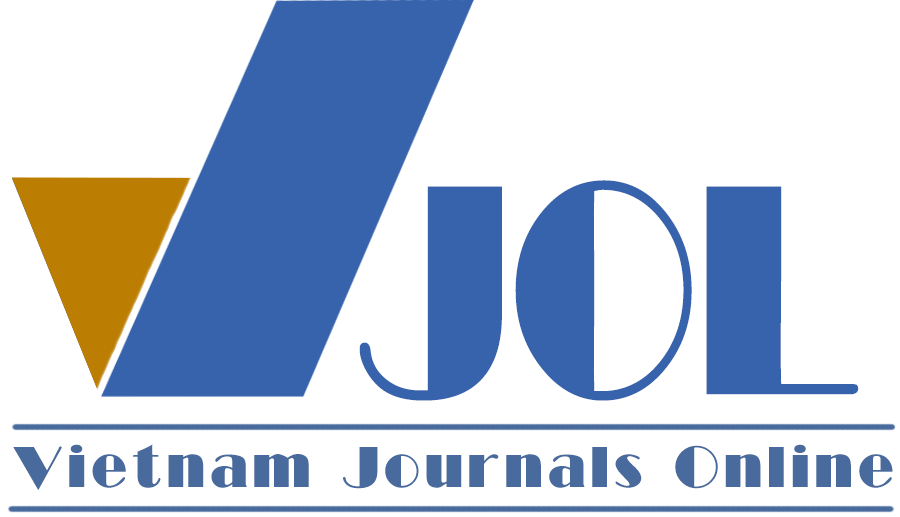Does innovation serve as a strategy for economic development in the short or long term? Empirical evidence from OECD countries
Authors
DOI: https://doi.org/10.57110/vnu-jeb.v4i3.360Keywords:
Innovation, economic growth, Pooled Mean Group, foreign direct investment, OECDReferences
Araki, M. E., Bennett, D. L., & Wagner, G. A. (2024). Regional innovation networks & high-growth entrepreneurship. Research Policy, 53(1), 104900. https://doi.org/10.1016/j.respol.2023.104900
Artz, K., Norman, P., Hatfield, D., & Cardinal, L. (2010). A longitudinal study of the impact of R&D, patents, and product innovation on firm performance. Journal of Product Innovation Management, 27(5), 725-740. https://doi.org/10.1111/j.1540-5885.2010.00747.x
Baumol, W. J. (2002). The Free-Market Innovation Machine: Analyzing the Growth Miracle of Capitalism (STU-Student edition). Princeton University Press, New Jersey.
Bond, S. R. (2002). Dynamic panel data models: A guide to micro data methods and practice. Portuguese Economic Journal, 1, 141-162. https://doi.org/10.1007/s10258-002-0009-9
Bryan, K. A., Lemus, J. & Marshall, G. (2022). R&D competition and the direction of innovation. International Journal of Industrial Organization, 82, 102841. https://doi.org/10.1016/j.ijindorg.2022.102841
Cincera, M., Ince, E. & Santos, A. (2024). Revisiting the innovation-competition nexus: Evidence from worldwide manufacturing and service industries. Structural Change and Economic Dynamics, 69, 586-603. https://doi.org/10.1016/j.strueco.2024.03.012
Greene, W. H. (2008). Econometric Analysis (6th edition). Prentice Hall, New Jersey.
Greenhalgh, C., & Rogers, M. (2010). Innovation, Intellectual Property and Economic Growth (STU-Student edition). Princeton University Press, New Jersey.
Hausman, J. A. (1978). Specification tests in econometrics. Econometrica, 46, 1251-1271. https://doi.org/10.2307/1913827
Hoang, N., Nahm, D. & Dobbie, M. (2021). Innovation, gender, and labour productivity: Small and medium enterprises in Vietnam. World Development, 146, 105619. https://doi.org/10.1016/j.worlddev.2021.105619
Hult, G. T. M., Hurley, R. F., & Knight, G. A. (2004). Innovativeness: Its antecedents and impact on business performance. Industrial Marketing Management, 33(5), 429-438. https://doi.org/10.1016/j.indmarman.2003.08.015
Jie, H., Zaman, S., Zaman, Q., Shah, A.H. & Lou, J. (2023). A pathway to a sustainable future: Investigating the contribution of technological innovations, clean energy, and Women's empowerment in mitigating global environmental challenges. Journal of Cleaner Production, 421, 138499. https://doi.org/10.1016/j.jclepro.2023.138499
King, R. G., & Levine, R. (1993). Finance, entrepreneurship, and growth. Journal of Monetary Economics, 32, 513-542. https://doi.org/10.1016/0304-3932(93)90028-E
Khurshid, A., Khan, K., Saleem, S. F., Cifuentes-Faura, J. & Calin, A. C. (2023). Driving towards a sustainable future: Transport sector innovation, climate change and social welfare. Journal of Cleaner Production, 427, 139250. https://doi.org/10.1016/j.jclepro.2023.139250
Law, H. L, Sarmidi, T., & Goh, L. T. (2020). Impact of Innovation on Economic Growth: Evidence from Malaysia. Malaysian Journal of Economic Studies, 57(1), 113-132. https://doi.org/10.22452/MJES.vol57no1.6
Maddala, G. S., & Wu, S. (1999). A comparative study of unit root tests with panel data and a new simple test. Oxford Bulletin of Economics and Statistics, 61, 631-652. https://doi.org/10.1111/1468-0084.0610s1631
Manual, O. (2005). Guidelines for Collecting and Interpreting Innovation Data. Paris: OECD/Eurostat.
Neely, A., & Hii, J. (1998). Innovation and Business Performance: A Literature Review. The Judge Insitute of Management Studies, University of Cambridge, 0-65.
Pesaran, M. H., & Smith, R. (1995). Estimating long-run relationships from dynamic heterogeneous panels. Journal of Econometrics, 68, 79-113. https://doi.org/10.1016/0304-4076(94)01644-F
Pesaran, M. H., Shin Y., & Smith, R. P. (1999). Pooled Mean Group Estimation of Dynamic Heterogeneous Panels. Journal of the American Statistical Association, 94, 621-634. https://doi.org/10.2307/2670182
Porter, M. E. (2008). On Competition. Boston: Harvard Business School Publishing Corporation.
Quevedo G., Blasco A., & Teruel, M. (2018). Financial constraints and the failure of innovation projects. Technological Forecasting and Social Change, 127, 127-140. https://doi.org/10.1016/j.techfore.2017.05.029
Westerlund, J. (2007). Testing for error correction in panel data. Oxford Bulletin of Economics and Statistics, 69, 709-748. https://doi.org/10.1111/j.1468-0084.2007.00477.x
Xie, Y. & Wu, D. (2024). How does competition policy affect enterprise digitization? Dual perspectives of digital commitment and digital innovation. Journal of Business Research, 178, 114651. https://doi.org/10.1016/j.jbusres.2024.114651
Zhang, L., Sun, H., Pu, T., Sun, H. & Chen, Z. (2024). Do green finance and hi-tech innovation facilitate sustainable development? Evidence from the Yangtze River Economic Belt. Economic Analysis and Policy, 81, 1430-1442. https://doi.org/10.1016/j.eap.2024.02.005
Downloads
Additional Files
Published
Abstract View
PDF Downloaded
How to Cite
Issue
Section
License
Copyright (c) 2024 Doan Quang Huy

This work is licensed under a Creative Commons Attribution-NonCommercial 4.0 International License.
by VNU Journal of Economics and Business






